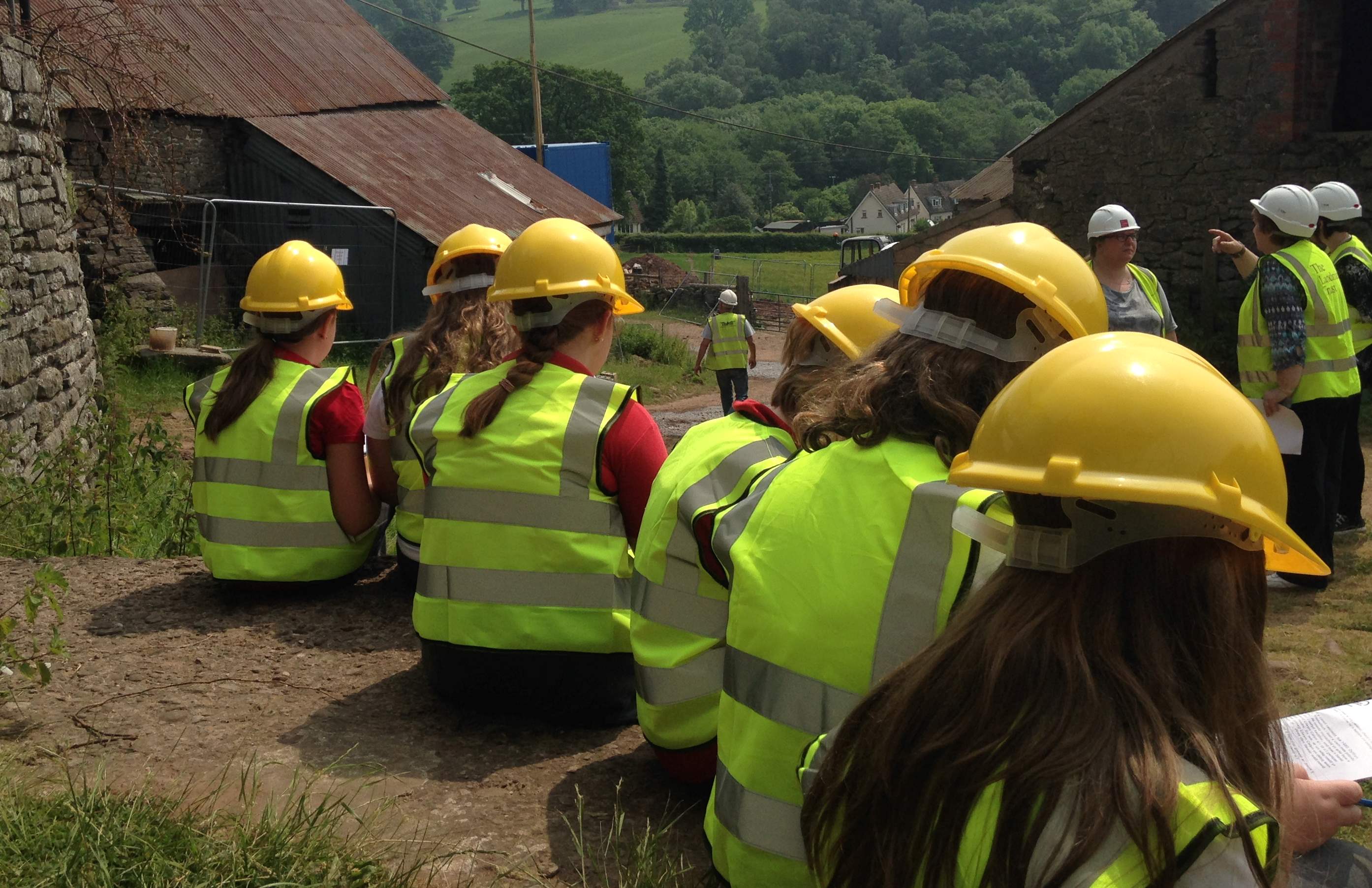
Local school children enjoyed visiting the site and participated in a range of creative and problem solving activities
The week beginning 6th of June 2016 was memorable for two reasons – it didn’t rain (much) and it was Landmark’s first ever Heritage at Work week with volunteers and schools taking part in training, work and engagement events at Llwyn Celyn. During the week 17 volunteers repointed old walls, built a new stile, cleared trackways and started on the repair of a dry stone wall. Over 50 school children visited the site and nearly 150 people took part in our Study Day or visited during the Open Day, listening to talks and watching demonstrations.
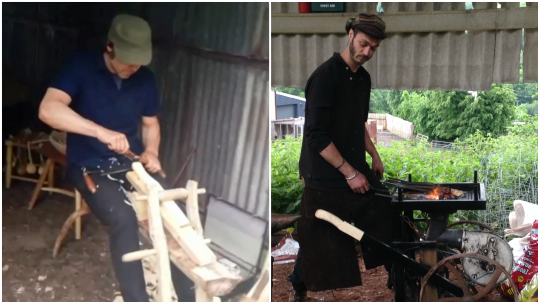
Gareth Irwin (left) creates traditional welsh furniture from green wood, while blacksmith Jack Waygood (right) arrived with his ingenious treadle powered portable forge
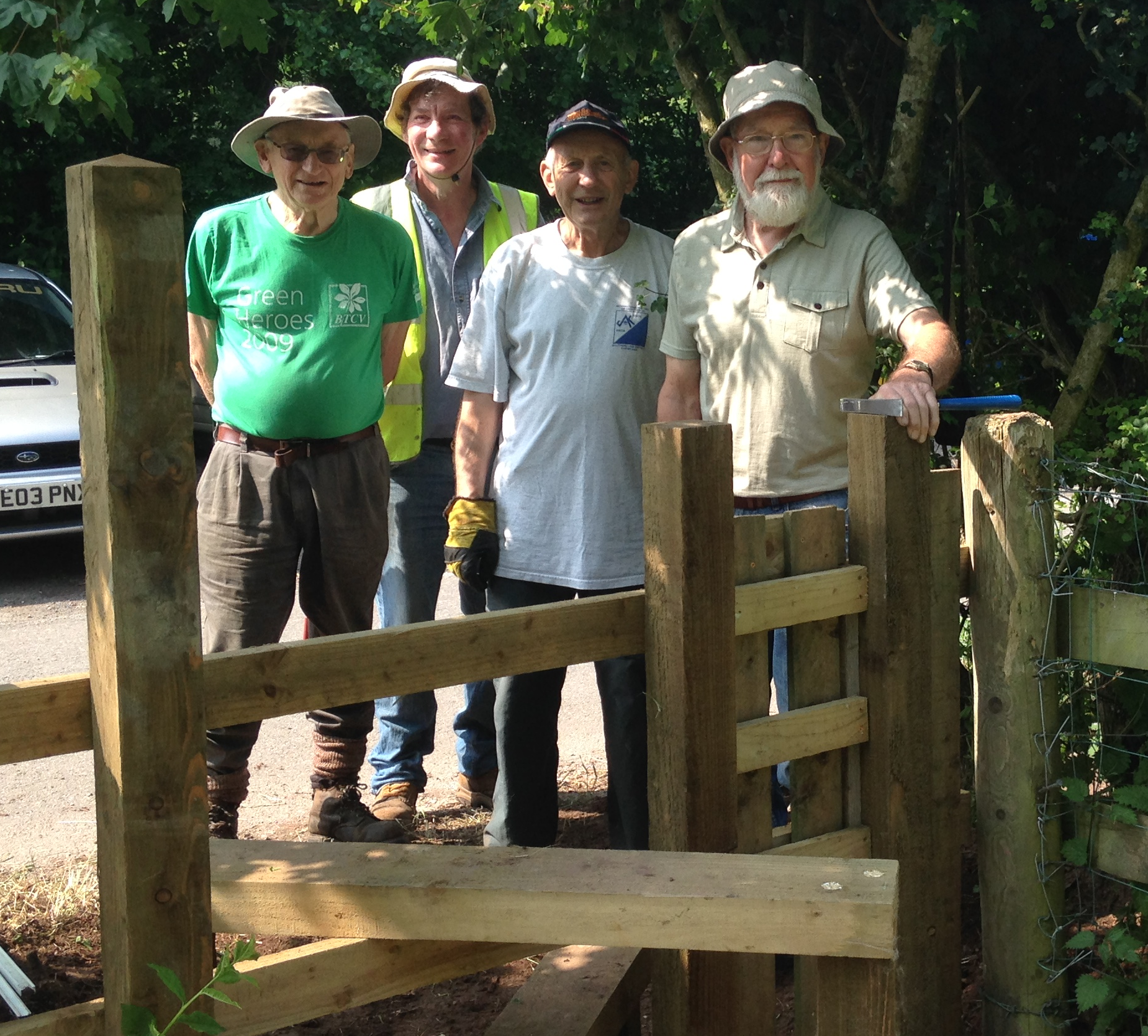
Volunteers travelled from far afield, including five members of the Warwickshire Conservation Volunteers, usually to be found at Astley Castle helping us keep the moat and footpaths clear. On the right are the Warwickshire Conservation Volunteers and the completed stile, which will allow easy access to the site from the parking area.
Local stone wall expert John Barber worked with an enthusiastic team to begin the repair of a collapsed perimeter wall, which also retains an ancient trackway – an important part of the landscape character of the site. The existing stone was reused and the resulting rebuilt section has a wonderful personality that uniquely reflects the hands that built it.
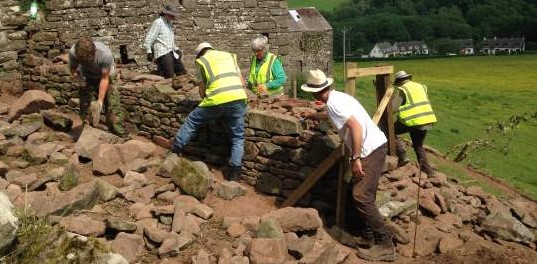
Work in progress. John and Luke offered expert tuition and help to the volunteers
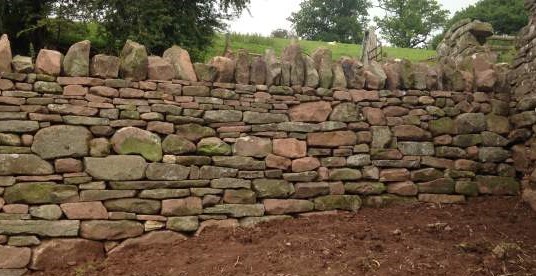
The completed section of stone wall is a beautifully crafted object which will stand for decades to come
Lime training was provided by Ty Mawr Lime – specialists in the field of lime and eco building products. Their knowledge of materials is second to none and passion for traditional buildings is infectious and our volunteers benefitted enormously from the training that Nigel, Sam, Scott and Julie delivered, giving them the confidence and the skills to contribute their time and effort to this project.
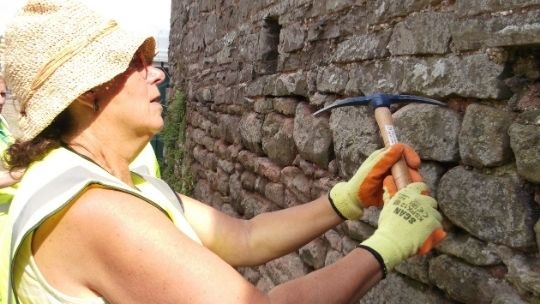
Volunteers use picks and chisels to remove old mortar. The voids and stones need to be thoroughly cleaned of loose material and wetted before the new mortar is applied
The approach to repairing the walls of traditional buildings is not straight forward. Old walls are usually a patchwork of different types of mortar – original lime mortars mixed from soil literally a stone’s throw away; later repairs using mortar left over perhaps from other building work on site or nearby; and more recent repairs often in cement. Cement applied to old walls is the most critical application to reverse.
Simply put, old walls were built differently - they are solid walls. Two layers of stone in-filled with rubble and soil. They defined as solid walls, comprised of two layers of stone infilled with rubble and soil. The lime mortar used in their construction allows moisture to pass in and most critically out of a building. Using cement to re point old walls prevents this process and traps the moisture in the building (modern walls are designed with a cavity to stop water penetrating the inner layer of the building. The point of transition between building the traditional way and the modern way is around 1919).
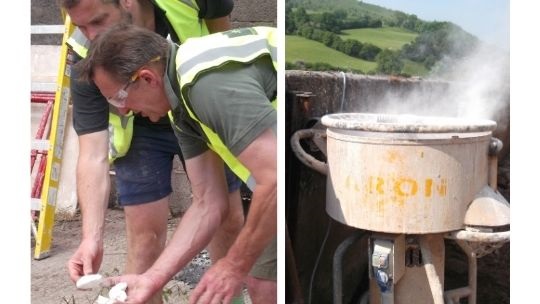
Nigel and Scott from Ty Mawr showing volunteers quicklime from our kiln also known as burnt lime. On the right is the mixer at work with steam (not dust) released by chemical reaction between burnt lime, soil and water. The resulting hot mix is then allowed to cool before use and any excess can be stored in buckets topped up with water.
So lime is the essential material for all traditional building projects. It is not just about ‘doing things the old way’ but about maintaining the equilibrium of a building. At Llwyn Celyn we identified the areas of walls that needed work and carefully assessed their condition, deciding which mortar needed to be removed, which areas needed stone repairs and importantly the type of lime mortar to use for these repairs - for there are many.
These range from the very ‘soft’ mortars, to the harder mixes with shorter setting times (but the trade-off is that they are less breathable). We decided to go right back to basics and use a hot mix. A hot mix is created when quicklime and aggregate (in this case, soil from the site) and water are mixed together at the same time. The quicklime is slaked and mixed in the same operation, releasing heat as it reacts (the normal practise nowadays, is to slake i.e. add water to the quicklime separately to create lime putty, which is then later mixed with the aggregate).
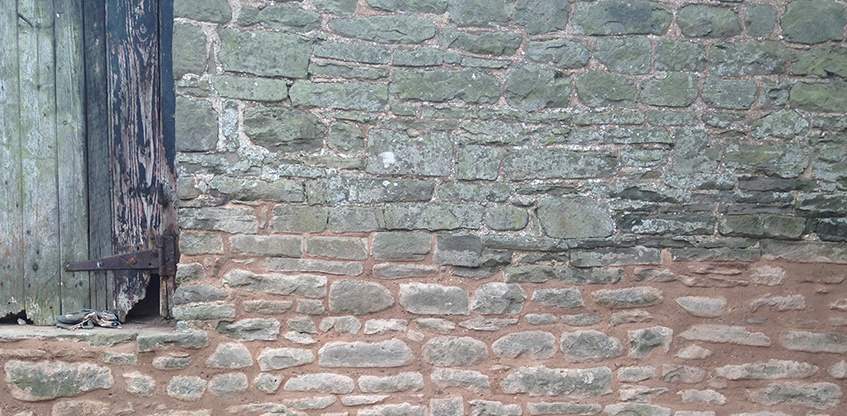
The finished section of wall. Our hot lime mix gave a good colour and texture match to the old mortar. The re pointed areas will look new for a while, but time will soon add its own patina to the surface.
We chose to work on two areas of the site – the granary wall, and the inside of one of the old stables. The bottom half of the granary wall was in poor condition. The tin roof over it has no gutter and little over-hang, so decades of rainwater had penetrated the wall and destroyed the mortar. In the stable, much of the pointing had completely disappeared over time. Here one of the walls is a retaining wall, built into the steep hillside, with water filtering its way though. The wall was completely repointed by our volunteers and, as this was a building that had once kept livestock, a lime wash was reapplied to the walls.
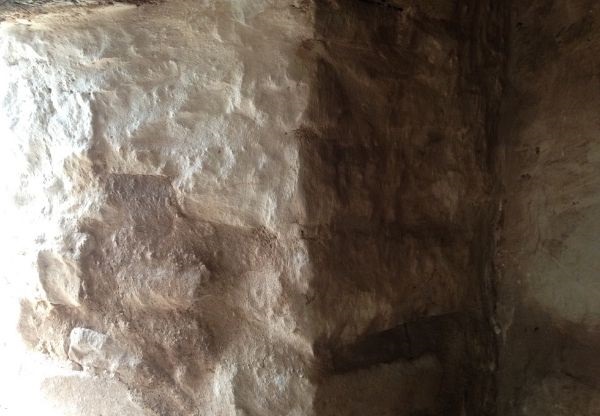
The interior of the stable has been repointed where necessary and lime washed. Lime wash is mildly antiseptic and was once used to coat the interior of all buildings housing livestock.
Later in the week a Study Day and an Open Day allowed visitors and volunteers the opportunity to catch up with the latest progress on site and talk to members of the project team. Helen Whitear, building and landscape archaeologist, spoke about our understanding of traditional buildings - the contribution they make to landscapes and townscapes and introduced the work of Adfer Ban a Chwm (ABC), who are aiming to bring back to use redundant buildings in the Brecon Beacons National Park and offer them as affordable housing. Catherine Bull busted some common place myths about the energy efficiency of traditional buildings – again highlighting the need to use the right materials to maintain and re-establish an atmospheric balance in a building.
At Llwyn Celyn we have a range of issues to tackle from subsidence, to timber repair to re-pointing. During the course of the next two years Our Heritage at Work weeks will be an opportunity for people to volunteer and gain hands on training and experience. Our Study Days and Open Days will be a chance to see the latest progress and meet experts in their field who will present on a range of these topics. To find out when the next events are, please sign up to our email newsletter or check the Llwyn Celyn project pages here.
For advice about using lime mortars please visit:
http://www.spab.org.uk/advice/technical-qas/technical-qa-14-lime/
http://www.spab.org.uk/advice/technical-qas/technical-qa-11-repointing/
To find out more about lime mortar products please visit: https://www.lime.org.uk/products/lime-mortars/?offset=0